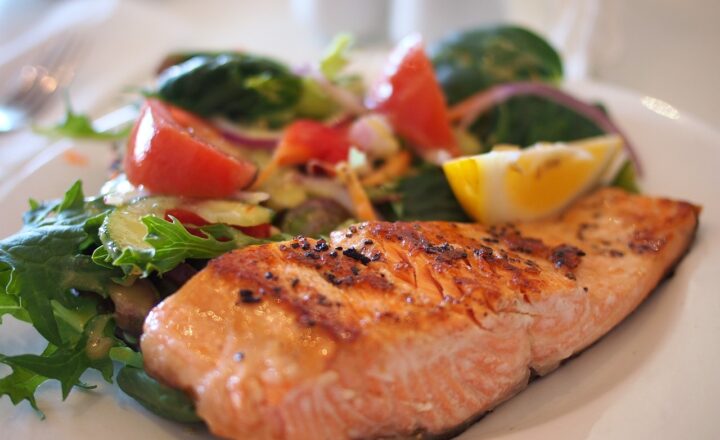How Sugar Impacts the Structure and Texture of Ice Cream and Frozen Desserts
November 11, 2024

Ice cream, a beloved treat enjoyed by many, is more than just a simple mixture of cream and flavoring. One of the most critical ingredients in ice cream and frozen desserts is sugar. While we often think of sugar primarily as a sweetener, its role in frozen desserts goes far beyond taste. It significantly influences the structure, texture, and overall quality of the final product. This article examines how sugar impacts ice cream and frozen desserts, the science behind it, and the implications for home bakers and ice cream makers.
1. The Science of Ice Cream Structure
To understand sugar’s impact on ice cream structure, we must first grasp the basics of emulsification and freezing. Ice cream is an emulsion, a combination of fat, water, and air. The structure of ice cream is affected by the balance of these components:
1. Fat: Provides creaminess and richness.
2. Water: Needed for freezing, but too much can lead to ice crystals.
3. Air: Incorporated during churning to create volume and lightness.
2. Role of Sugar in Ice Cream Composition
Sugar plays several vital roles in the structure and texture of ice cream:
– Sweetness: As the primary sweetener, sugar adds flavor and balances the richness of cream and eggs.
– Freezing Point Depression: Sugar lowers the freezing point of the mixture, meaning it won’t freeze as hard as a mixture without sugar. This results in a smoother texture, preventing crystallization.
– Texture & Mouthfeel: The presence of sugar contributes to a creamy mouthfeel, as sugar interferes with ice crystal growth during freezing. Fewer ice crystals mean a smoother, pleasanter texture.
To see how sugar works in this context, consider the freezing point of a simple sugar solution. For example, a typical ice cream mix consists of cream, milk, and sugar, which creates a solution that remains soft and scoopable at typical freezing temperatures.
3. Comparing Sugars: Granulated, Brown, and Alternatives
Different types of sugar can produce diverse results in ice cream texture and flavor:
– Granulated Sugar: The most common choice, granulated sugar provides a clean sweetness without altering the flavor profile much.
– Brown Sugar: Containing molasses, brown sugar adds a richer flavor and may alter the texture slightly due to its moisture content. Brown sugar can enhance the creaminess further due to the added liquid.
– Liquid Sweeteners (e.g., Honey, Maple Syrup): These sweeteners have different compositions and can influence texture by introducing water. They can lead to softer textures and add unique flavors, but control over sweetness can be trickier.
– Sugar Substitutes (e.g., Stevia, Erythritol): These can be used to make lower-calorie varieties. However, they do not mimic sugar’s freezing point depression and can lead to a more crystalline texture, resulting in less creamy ice cream.
Choosing the right type of sugar can significantly alter the final product.
4. The Impact of Sugar on Texture: A Deeper Look
The texture of ice cream is primarily determined by the size of the ice crystals present. Sugar’s ability to lower the freezing point plays a crucial role here. Without sufficient sugar, ice cream would freeze too hard, leading to large ice crystals that create a grainy texture. Here’s how sugar contributes to the overall texture:
– Smoothness: By lowering the freezing point and inhibiting ice crystal growth, sugar allows the ice cream to maintain a smoother texture and mouthfeel.
– Creaminess: Sugar enhances the mouthfeel. More sugar means a softer ice cream that is easier to scoop.
– Air Incorporation: The presence of sugar assists in trapping air during churning. Air bubbles remain intact in the ice cream matrix, leading to a lighter and fluffier dessert.
Understanding the textural feedback from sugar helps both home cooks and professionals create superior frozen desserts.
5. Sugar Content and Flavor Balance
Not only does sugar affect the texture, but it also balances flavor. The correct amount of sugar ensures that flavors, such as chocolate or vanilla, are pronounced without being overshadowed by the creaminess. A well-balanced ice cream typically contains about 12-16% sugar by weight. Sugar enhances the overall flavor profile by providing sweetness that complements other ingredients. Furthermore, it can counteract sourness in ingredients such as fruits..
Finding the right balance is critical for creating enticing flavors and good overall quality.
6. Tips for Home Ice Cream Makers
Home bakers venturing into frozen desserts should consider these tips regarding sugar use:
– Stick to Reliable Recipes: Follow tested recipes that indicate the sugar content necessary for proper texture and flavor balance.
– Experiment with Different Sugars: While recipes can serve as guidelines, don’t hesitate to experiment with various sugars or sweeteners to find your desired flavor and texture.
– Monitor Temperature During Freezing: Ensure you’re freezing the mixture at the optimal temperature; an overly cold environment can negate sugar’s effect.
– Churn Thoroughly: The churning process is just as essential; ensure your mixture incorporates enough air for light and creamy textures.
Taking these factors into account will help to perfect your homemade ice cream creations.
Conclusion
In summary, sugar is an indispensable element in the world of ice cream and frozen desserts. It not only provides sweetness but also plays critical roles in determining structure, texture, and flavor balance. Understanding sugar’s multifaceted role can empower home bakers and ice cream enthusiasts to create delicious results that are smooth, creamy, and bursting with flavor. Whether you’re an amateur or an experienced gelato maker, don’t underestimate the impact of sugar in your frozen treats. With the right techniques and knowledge, you can achieve a delightful ice cream experience that brings joy to every scoop.








